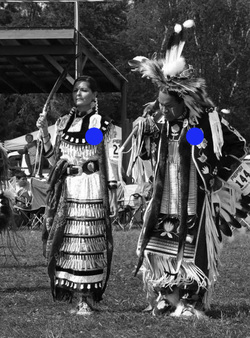
As an Anishinabekwe I stand in solidarity with those who resist the First First Nations Control over First Nations Education Agreement, a retooling of the FNEA because I believe…
1) Anishinabeg have a right to an education that is not the same as every other Canadian, but an education that will help reclaim, revitalize and strengthen our knowledges and the intergenerational ties that are instrumental to the life of these knowledges.
2) this agreement is an economic strategy aimed at assimilating Indigenous Peoples so that they can be more productive members of a Canadian society.
3) this agreement further colonizes our knowledges and knowledge sharing practices through the imposition of provincial rules, certification, training, etc.
4) this agreement reflects more about what Canada wants for "it's First Nations" as opposed to recognizing what each Nation has an inherent treaty right to.
5) fear, ignorance, and greed motivate the people in authoritative, elitist positions that claim they are acting for my wellbeing yet refuse to listen to my voice or the voice of thousands of other Indigenous Peoples who share my concerns and relate to my struggle.
6) I will be labeled by the aforementioned elite group as a delinquent—a derelict—a disinformed Indian…the other half will accuse me of "spewing pseudo academia".
7) through the process of making my mark, I awaken and strengthen my imagination, consciousness, body, awareness
8) in fighting colonialism on the visual/material battlefield
9) I am supported and surrounded by my ancestors
10) in a good life for my children, Keeshig and Kiniw, and their children’s children.
****On February 12, 2014 Métis artist/activist Christi Belcourt initiated a visual campaign following meetings and announcements regarding the First Nations Control over First Nations Education Agreement which took place last week in Alberta.
Here are her words on why she started this:
"For all of us who disagree, who want change, who stand up for change. I’m claiming the blue dot for us as a mark of pride"
1) Anishinabeg have a right to an education that is not the same as every other Canadian, but an education that will help reclaim, revitalize and strengthen our knowledges and the intergenerational ties that are instrumental to the life of these knowledges.
2) this agreement is an economic strategy aimed at assimilating Indigenous Peoples so that they can be more productive members of a Canadian society.
3) this agreement further colonizes our knowledges and knowledge sharing practices through the imposition of provincial rules, certification, training, etc.
4) this agreement reflects more about what Canada wants for "it's First Nations" as opposed to recognizing what each Nation has an inherent treaty right to.
5) fear, ignorance, and greed motivate the people in authoritative, elitist positions that claim they are acting for my wellbeing yet refuse to listen to my voice or the voice of thousands of other Indigenous Peoples who share my concerns and relate to my struggle.
6) I will be labeled by the aforementioned elite group as a delinquent—a derelict—a disinformed Indian…the other half will accuse me of "spewing pseudo academia".
7) through the process of making my mark, I awaken and strengthen my imagination, consciousness, body, awareness
8) in fighting colonialism on the visual/material battlefield
9) I am supported and surrounded by my ancestors
10) in a good life for my children, Keeshig and Kiniw, and their children’s children.
****On February 12, 2014 Métis artist/activist Christi Belcourt initiated a visual campaign following meetings and announcements regarding the First Nations Control over First Nations Education Agreement which took place last week in Alberta.
Here are her words on why she started this:
"For all of us who disagree, who want change, who stand up for change. I’m claiming the blue dot for us as a mark of pride"
 RSS Feed
RSS Feed